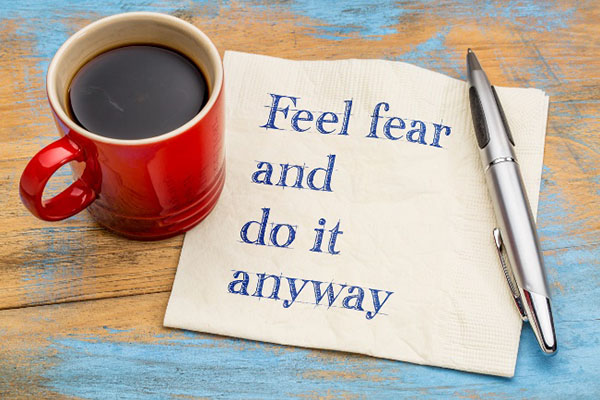Social Anxiety and ADHD At Work
What if you have both social anxiety and ADHD at work?
Navigating the workplace can be a challenge if you have social anxiety and ADHD.
But……with the right strategies and support, you can thrive professionally.
Let’s explore some of the issues you might face and then some practical tips and techniques you can use right away to help you excel in the workplace if you have both ADHD and social anxiety.
First – understand the issues….
Here are some common scenarios that people with social anxiety and ADHD may find challenging in the workplace:
1. Meetings and Presentations:
Ugh, those dreaded meetings! For someone with both social anxiety and ADHD, speaking in front of others or giving presentations can be overwhelming. It's like all eyes are on you, and your inner critic starts whispering, "What if I mess up?" Plus, staying focused during those long (boring?) meetings can be a major challenge if you have ADHD.

2. Team Collaboration and Networking:
Group discussions, networking and brainstorming sessions can be a trigger for self-doubt and anxiety. The fear of being judged or criticized creeps in, making it tough to share ideas or fully participate.
3. Time Pressure and Deadlines:
For those with ADHD, organizing tasks and meeting deadlines can sometimes feel like an uphill battle. Procrastination might kick in, you may be easily distracted or you might feel overwhelmed by the workload.
4. Performance Evaluation and Feedback:
Receiving feedback, even if it's constructive, can trigger your inner critic. Thoughts like “They are going to fire me”, “I’ll never get that promotion” , or “They will find out I’m not really good at my job” can flood your mind.
Many people feel on edge and overwhelmed during performance evaluation sessions to the point that they can barely hear what’s being said – and that’s everyone – regardless of if you feel socially anxious or experience attention issues. If you have issues with processing and attention, it can be even more difficult.
5. Social Interactions and Workplace Relationships:
Lunch breaks, coffee chats, or office events can provoke anxiety for those with social anxiety. Making small talk or trying to connect with colleagues may feel like navigating a minefield – never mind office politics, conflicts and other uncomfortable conversations!
6. Open Office Environments:
Open office layouts foster collaboration, but they also come with noise, interruptions, distractions and reduced privacy. It's hard to concentrate when you can hear everyone's conversations, and then what about that feeling of being watched? It can amp up the anxiety.
7. Change and Unexpected Situations:
Difficulty adapting to changes in routines, procedures, or work assignments, which can disrupt workflow and increase anxiety. Responding to unexpected situations or last-minute requests may lead to heightened stress and difficulties with impulsivity.
It is essential to remember every person with social anxiety and ADHD will have their own unique triggers and sensitivities. Each person's experience is unique, and identifying personal work-related triggers can help tailor strategies and accommodations to manage these challenges effectively.
If you have social anxiety and ADD which workplace scenarios feel most difficult for you?
Take a moment to make an inventory of the situations which are most challenging for you.
Now, let’s look at some solutions:
Optimize Your Work Environment and Processes
Optimizing your workplace environment with ADHD in mind can make a world of difference!
Here are some tips to help you create a more ADHD-friendly workspace:
1. Minimize Distractions:
Create a space that promotes focus and reduces external disruptions. Use noise-canceling headphones to drown out background noise or consider using a white noise machine to create a soothing atmosphere.
2. Organize and Declutter:
Keep your workspace tidy and clutter-free. A chaotic environment can make it harder to stay focused. Use organizers, bins, or file folders to keep everything in its place and easily accessible.
3. Prioritize Ergonomics:
Pay attention to your physical comfort. Ensure your chair, desk, and computer setup are ergonomically aligned to reduce discomfort and potential distractions. A comfortable workspace can enhance your ability to stay on task.
4. Color-Code and Label:
Use color-coded folders, labels, and sticky notes to help categorize and organize your work. Visual cues can assist with prioritization and provide a clear structure for your tasks.
5. Utilize Visual Reminders:
Post reminders and important information in visible places. Sticky notes, whiteboards, or digital task managers can help you stay on track and remember crucial deadlines or appointments.
6. Break Tasks into Smaller Steps:
Large projects can feel overwhelming. Break them down into smaller, manageable tasks. This way, you can focus on one step at a time and experience a sense of accomplishment as you tick off completed tasks.
7. Incorporate Visual Timers and Alarms:
Time management can be a challenge, but visual timers or smartphone alarms can be powerful tools. Set timers to help you stay on track and allocate specific time periods for tasks. It provides a visual reminder of how much time you have left.
8. Utilize Digital Tools:
Take advantage of productivity apps and software designed to assist with organization, time management, and task tracking. From to-do lists to calendar apps, digital tools can help you stay organized and remind you of upcoming deadlines.
9. Create a Daily Routine:
Establish a consistent daily routine to help structure your day. Set aside specific time blocks for different tasks and try to stick to your schedule as much as possible. A predictable routine can provide a sense of stability and reduce decision fatigue.
10. Take Regular Breaks:
Remember to schedule regular breaks throughout your workday. Short breaks can help refresh your mind, improve focus, and prevent burnout. Set alarms or use timers to remind yourself to step away from your work and recharge.
By implementing these strategies and tailoring them to your specific needs, you can create an environment that supports better ADHD management. Remember, optimizing your workplace is all about finding what works best for you, so don't be afraid to experiment and make adjustments until you find your sweet spot!
Manage Workplace and Social Interactions
Managing workplace relationships when you have social anxiety can feel challenging, but with some strategies and gradual steps, you can navigate those interactions more comfortably. Here are some tips to help you manage workplace relationships with social anxiety:
1. Start Small:
Begin by just saying hello to to people you pass in the hallways, speaking up in meetings and building connections with just one or two colleagues you feel most comfortable around. Focus on developing those relationships gradually. It takes time to connect, build skills and feel more confident.
2. Find Common Ground:
Seek out shared interests or topics that you can discuss with your coworkers. This can serve as a conversation starter and help alleviate some of the anxiety. It's amazing how a common hobby or TV show can create a bond!
3. Active Listening:
Engage in active listening during conversations. Practice being present in the moment and genuinely showing interest in what others are saying. By actively listening, you can shift the focus away from your anxiety and build stronger connections.
4. Ask Open-Ended Questions:
Instead of putting pressure on yourself to come up with things to say, ask open-ended questions to encourage others to share more about themselves. People generally love talking about themselves, and it takes the pressure off you to keep the conversation going.
5. Practice Positive Self-Talk:
Combat negative thoughts and self-doubt by practicing positive self-talk. Remind yourself of your strengths, accomplishments, and the value you bring to the workplace. Replace negative thoughts with affirmations that boost your confidence.
6. Take Breaks:
If socializing becomes overwhelming, it's okay to take short breaks to recharge. Step away to a quiet space for a few minutes, practice deep breathing, or engage in a calming activity. Giving yourself time to decompress can help manage anxiety levels.
7. Seek Support:
Reach out to a trusted coworker, supervisor, or even a mentor who can provide support and guidance. Let them know about your social anxiety, and they may be able to offer reassurance or help create a supportive work environment.
8. Consider Therapy, Coaching or Support Groups:
You can learn mindset strategies and practice skills, tools and techniques to manage social anxiety in the workplace. Support groups and online communities (we have one!) can offer a safe space to connect with others who share similar experiences.
9. Set Boundaries:
It's important to set boundaries that prioritize your well-being. Be mindful of your energy levels and know when to step back from social situations if they become too overwhelming. Communicate your needs to colleagues and find a balance that works for you.
10. Celebrate Small Victories:
Recognize and celebrate even the smallest successes in your workplace relationships. Every interaction where you felt more at ease or made a meaningful connection is a step forward. Give yourself credit for your progress, no matter how small it may seem.
Remember, managing workplace relationships with social anxiety is a gradual process. Be patient with yourself and don't be too hard on yourself if progress feels slow. By implementing these strategies and taking small steps, you can gradually build meaningful connections and navigate workplace relationships more comfortably.
Having both social anxiety and ADHD can be challenging, especially at work. However, there are many different strategies and techniques you can incorporate that will allow you to thrive and excel.

If you found this info helpful, please help others and share it on social media.
